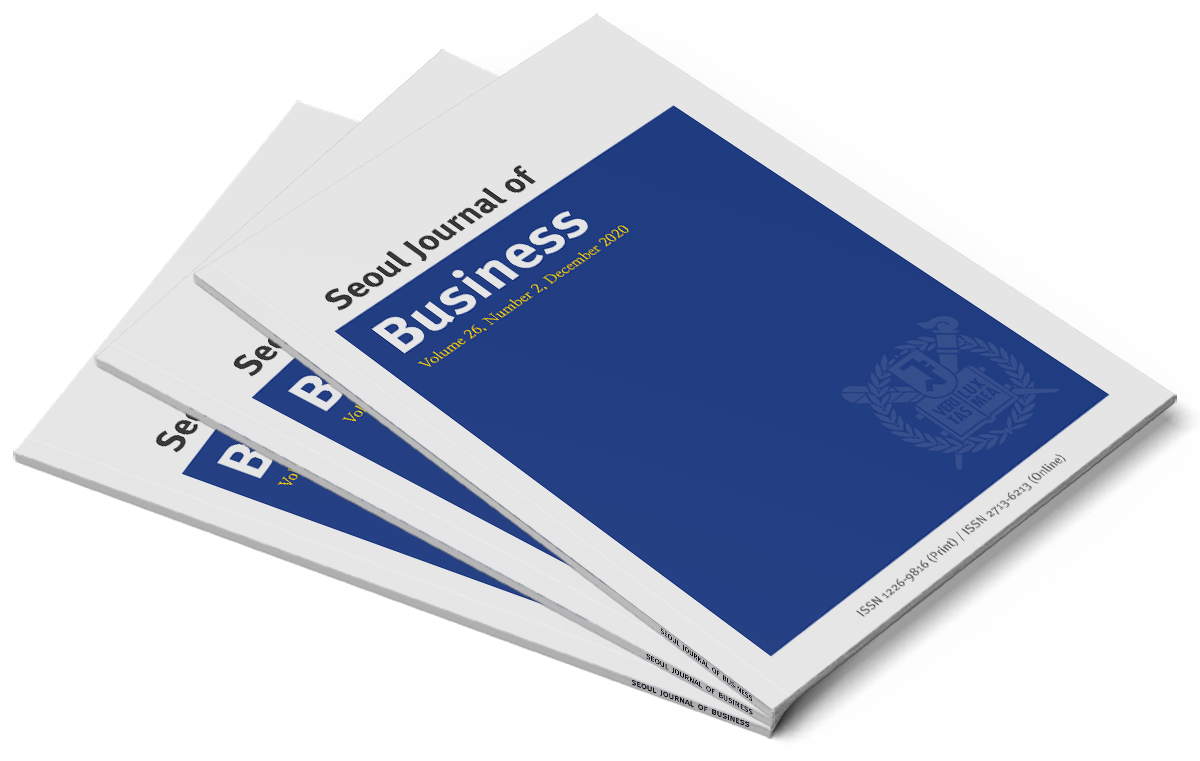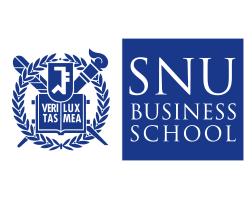Recent Issues
Vol.25/2 (2019, December)
Is Expert Is Expert Input Valuable? The Case of Predicting Surgery Duration
Author ROUBA IBRAHIM and SONG-HEE KIM
Keywords healthcare operations, operating room, predicting surgery duration, expert input, discretion
Download
Most data-driven decision support tools do not include input from people. We study whether and how to incorporate physician input into such tools, in an empirical setting of predicting the surgery duration. Using data from a hospital, we evaluate and compare the performances of three families of models: models with physician forecasts, purely data-based models, and models that combine physician forecasts and data. We find that combined models perform the best, which suggests that physician forecasts have valuable information above and beyond what is captured by data. We also find that applying simple corrections to physician forecasts performs comparably well.
Vol.25/2 (2019, December)
Risk Sharing and Interbank Market Fragilities
Author DONG BEOM CHOI
Keywords risk sharing, interbank market, network, financial crisis
Download
Risk sharing among banks helps them diversify idiosyncratic risks, but their interbank borrowing costs can become more volatile and bring financial fragility. Banks facing liquidity shortages need to pay an extra cost of credit when their lenders have bargaining powers, which depends on the likelihood of fire-sale and the fire-sale price discount. Risk sharing can decrease likelihood of liquidity shortage and lower the borrowing cost. However, the fire-sale discount increases, since joint distress arises and more assets are liquidated simultaneously. Though the interbank borrowing cost decreases with risk sharing, it may become more sensitive to changes in aggregate uncertainty.
Vol.25/2 (2019, December)
Heterogeneous Expectations, Asset Prices, and Trading Volume under a Non-expected Utility Function with CARA
Author JAEHO CHO
Keywords Heterogeneous Expectations, Non-expected Utility Function, Constant Absolute Risk Aversion, Asset Prices, Trading Volume
Download
Using a non-expected utility function that exhibits constant relative risk aversion (CRRA), Cho (2001) explores a theoretical model of asset pricing under heterogeneous beliefs in the case where only one risky asset is traded. This paper extends his work into the case where agents trade a risky asset and the riskless asset as well, adopting a non-expected utility function that exhibits constant absolute risk aversion (CARA). In a variant of the general equilibrium setting of Lucas (1978), major findings of the paper are as follows: (i) When agents differ only in expectations about future dividends, the question of who is the buyer and who is the seller of each asset depends solely on the degree of optimism. Unlike the case of Cho (2001), there is no role of intertemporal substitution. (ii) Increased dispersion of expectations will raise the risk-free rate and lower the risky asset’s price. This result is consistent with that of Abel (1990). (iii) Although the equity premium goes up as a consequence of result (ii), heterogeneity per se does not help to resolve the puzzle posed by Mehra & Prescott (1985) and Weil (1989). (iv) The trading volume of the risky asset increases proportionately with the cross-sectional variance of expectations, and the same is true for the riskless asset. (iv) An increase in the risk-free interest rate will reduce the trading volume of the riskless asset unless the intertemporal substitution parameter is less than 1/2. In addition to these findings, many more comparative statics results are obtained from closed-form solutions for asset prices and trading volume.
Vol.25/2 (2019, December)
Value Relevance of Add-back of Loan Loss Reserves
Author HYEJIN AHN and YOUNG JUN KIM
Keywords Add-backs, regulatory capital, loan loss reserves, value relevance
Download
Under the current bank regulatory capital framework, loan loss reserves (LLR) are added back to regulatory capital up to a certain limit (henceforth, ‘add-backs’). This study examines how equity investors value these addbacks. Decomposing LLR into add-backs and other LLR, we find that add-backs have positive value relevance if such add-backs increase total regulatory capital and other LLR has negative value relevance. This positive value relevance of add-backs is driven by banks with low capital levels. Our finding indicates that the market perceives add-backs as capital rather than as an expense.
Vol.25/1 (2019, June)
Peer Perspectives on Employee Idiosyncratic Deals
Author JEONG-YEON LEE and HYESOOK CHUNG
Keywords idiosyncratic deals, turnover intention, workplace flexibility, procedural justice
Download
In this paper, we attempt to describe the relationship between the observation of coworker idiosyncratic deals (i-deals: Rousseau et al., 2006; Rousseau, 2005) and employee turnover intention by incorporating two explanatory mechanisms: workplace flexibility and procedural justice. We hypothesize contrasting implications of coworker flexibility i-deals and developmental i-deals on these two mediating mechanisms. Based on a sample of 176 employees, we find differential implications for the two types of i-deals and mediators. We discuss these findings and the implications of our research.
Vol.25/1 (2019, June)
Determinants of Potential Output Growth: Empirical Evidence in 18 OECD Countries, 1990-2016
Author MANSOKKU LEE
Keywords potential output growth, Kalman filter, panel data regressions, productivity, labor quality
Download
In this paper, we examine the contribution of labor quantity, labor quality, ICT capital, non-ICT capital, and the productivity of production system to potential output growth for 18 OECD countries from 1990 to 2016. For this, we develop a measure of a country’s potential output growth using a time-series analysis and apply panel data regressions to find empirical evidence. Empirical findings suggest that in developed countries, improvements in productivity and labor quality are major determinants that lead to an increase in economic potential.
Vol.25/1 (2019, June)
Conditional Conservatism: An Analysis of Nonlinearity and Lead-Lag Relations
Author BOK BAIK and LEE-SEOK HWANG
Keywords Conservatism, Asymmetric timeliness, Nonlinearity, Asset write-offs
Download
Recent studies have provided evidence that the association between earnings and contemporaneous returns is stronger when returns are negative, reflecting accounting conservatism. In this paper, we investigate two important aspects in this asymmetric timeliness of earnings: (1) whether the contemporaneous earnings-return relation is concave and (2) whether earnings show asymmetric timeliness with respect to lagged returns. We show that the relation between earnings and stock returns is more salient for extreme negative returns, implying a concave relationship between earnings and returns. We also find asymmetric timeliness with respect to lagged returns. Moreover, we find similar results using earnings line items such as special items and discontinued items. Overall, our evidence suggests that the Basu-type regression without considering these two aspects biases the extent of conditional conservatism.
Vol.24/2 (2018, December)
Hyunkwon (kwon) CHo
Author Regulation FD Disclosure of 8-K filing and Stock Crash Risk
Keywords Stock crash risk; Regulation FD; 8-K filings
Download
This paper tests whether item 7.01 of the Form 8-K filing, which is subject to the regulation FD, mitigates stock crash risk. The regulation FD forces the firm to communicate private information using information channel with broad coverage. Such communications may mitigate the firm’s stock crash risk by revealing the negative news in a more timely manner. Consistently, I find a negative association between the frequency of item 7.01 disclosures with the negative news (measured by market reaction surrounding the Form 8-K filing date) and subsequent stock crash risk. On the contrary, the results show that there is no association between the frequency of item 7.01 disclosures with the positive news and subsequent stock crash risk. Such association is more pronounced when the firm’s is not followed by equity analysts or do not have high percentage of institutional ownership. I also find that item 7.01 disclosures provide incremental information over other voluntary items or mandatory items of the Form 8-K filing. Finally, I use tone of the item 7.01 disclosures to identify whether the news is positive or negative, and find consistent results to the main findings. Overall, these findings suggest that communications subject to the regulation FD, especially the negative ones, are an important mechanism that mitigate stock crash risk.
Vol.24/2 (2018, December)
Credit Risk and Underlying Asset Risk
Author JONG-RYONG LEE
Keywords Credit Risk, Expected Option Return, Pricing of an Option, Pricing of Risky Bond, Relation between Credit Risk as Expected Option Return and Asset Risk
Download
This paper develops the credit risk of simple risky bond (Merton 1974) as expected option return to the maturity and analytically presents that the credit risk is influenced by the underlying asset risks. The paper moreover shows that the direction and magnitude of the influence depends on what the underlying asset risks are. Simulation results indicate that the relations between the credit risk and the asset risks are different among asset risks.
Vol.24/2 (2018, December)
Investor’s Overreaction to an Extreme Event: Evidence from the World Trade Center Terrorist Attack
Author SOJUNG CAROL PARK
Keywords September 11, Overreaction Hypothesis, Uncertain Information Hypothesis, Information Asymmetry
Download
This paper investigates whether investors overreacted to the World Trade Center terrorist attack, using insurers’ stock returns. Short-term abnormal return reversals are observed after the 9/11 attack. The reversals may reflect the substantially increased uncertainty surrounding insurer stocks after the event, meaning that the price reactions are efficient risk adjustments. However, after controlling for the change in risk, I still find evidence of price reversals, which I attribute to investor overreaction. To bolster this claim, I provide cross-sectional evidence that reversals are stronger for insurers with higher information asymmetry, which have wider ex-ante bid-ask spreads and smaller numbers of analysts following. This result indicates that the reversals are likely due to behavioral biases.
Seoul Journal of Business

ISSN 1226-9816 (Print)
ISSN 2713-6213 (Online)
ISSN 2713-6213 (Online)


